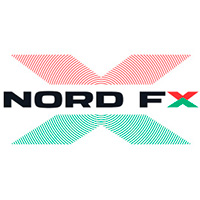One simple method we can use, in order to begin to understand the concept of spreads in the forex market, is to consider the times when we change our holiday currency at a bureau de change. We are all familiar with exchanging our domestic currency for holiday money; pounds to euros, dollars to euros, euros to yen. In the window on the bureau de change, or on its electronic board, we will see two different prices, the bureau is effectively stating; "we buy at this price and we sell at this price." A quick calculation reveals that there is a gap in values and prices there; the spread, or the commission. This is perhaps the simplest example of a forex spread that we see in our daily lives.
The simple definition of a "spread" is the difference between the buying and selling price of a security. It can also be regarded as one of the costs of doing business when trading. The spread in the forex markets can be described as the difference between the various buying and selling prices on offer for any particular currency pair. Before any trade actually becomes profitable, forex traders must first account for the cost of the spread, automatically deducted by the broker. A lower spread naturally ensures that successful trades will move into profitable territory earlier.
In the forex markets investors are still exchanging one currency for another, trading one currency versus another. Traders use a certain currency to take a position versus the other currency, betting that it will fall or rise. Therefore, currencies are quoted in terms of their price in another currency.
In order to express this information easily, currencies are always quoted in pairs, for example EUR/USD. The first currency is called the base currency and the second currency is called the counter, or quote currency (base/quote). For example, if it took $1.07500 to buy €1, the expression EUR/USD would equal 1.075/1. The EUR (euro) would be the base currency and the USD (dollar) would be the quote, or the counter currency.
So that is the straightforward, universal, method used to quote currencies in the marketplace, now let's look at how the spread is calculated. Forex quotes are always provided with "bid and ask" prices, or "buy and sell" this is similar to what many investors will be familiar with if they have ever bought or sold equities; there is a different price to sell a share and there is a difference price to buy a share. Generally this small spread is the broker's profit on the transaction, or the commission.
The bid represents the price at which the broker is willing to buy the base currency (the euro in our example) in exchange for the counter currency the dollar. Conversely, the ask price is the price at which the broker is willing to sell the base currency in exchange for the counter currency. Forex prices are generally quoted using five numbers. So, for example, let's say we had a EUR/USD bid price of 1.07321 and ask price of 1.07335, the spread would be 1.4.
Fixed spreads versus true market pricing
Now we have explained what spreads are and how they are calculated, it is important to stress the critical difference between the standard market maker broker with their advertised fixed spreads, and how an ECN - STP broker (such as FXCC) operates, whilst offering access to the true market spreads. And how a broker operating an ECN - STP model is the right choice (arguably the only choice) for traders who consider themselves professionals.
Many traditional market maker forex brokers will advertise what they term their "low, fixed, forex spreads", as being an advantage to forex traders. However, the reality is that fixed spreads cannot offer a significant advantage and in many instances may be misleading, given that market makers (by definition) make their own market and a market within a sector in order to benefit their own profitability.
Market makers may employ tactics such as widening the spreads; a tactic whereby forex brokers with dealing desks manipulate the spreads on offer to their clients when client trades move against the broker. The trader may place the trade at what they perceive to be a fixed one pip spread, however, that spread may be three pips away from the true market pricing, therefore the actual spread paid is (in reality) four pips. Comparing this to an ECN straight through processing model, where the trader's order is matched by the ECN participants, it becomes apparent how essential it is for retail traders, who want to be considered professionals, to place trades through an ECN environment.
FXCC's ECN/STP trading model never displays fixed spreads, the model offers up bid-ask quotes aggregated by a liquidity pool of constituents; predominantly the leading fx liquidity providers. Therefore the spread on offer will always accurately reflect the true buying and selling rates for a particular currency pair, ensuring that investors are trading forex under real forex market conditions of genuine supply and demand parameters.
A fixed spread may seem like a good thing when market conditions are optimal and there is heavy supply and demand. The fact is, a fixed spread remains in place even when market conditions are not the best and regardless of what the true buying and selling rates for any given currency pair are.
Our ECN/STP model provides our clients with direct access to the other Forex market participants (retail and institutional). We do not compete with our clients, or even trade against them. This grants our clients more advantages over dealing desk market makers:
- Very tight spreads
- Better forex rates
- No conflict of interest between FXCC and its clients
- No limits on Scalping
- No “stop-loss hunting”
FXCC strives to offer its clients the most competitive rates and spreads in the market. This is the reason we have invested in establishing relationships with reliable liquidity providers. The advantage our clients have is that they enter the forex arena on the same terms as the largest financial institutions.
Prices are streamed from various liquidity providers to FXCC’s Aggregation Engine which then selects the best BID and ASK prices from the streamed prices and posts the selected best BID/ASK prices to our clients, as illustrated in the flow diagram below.
 Forex trading is a captivating endeavor, promising both active and passive income streams. Yet, mastering forex is a continuous journey that transcends expertise levels, be it a novice or a seasoned trader...
Forex trading is a captivating endeavor, promising both active and passive income streams. Yet, mastering forex is a continuous journey that transcends expertise levels, be it a novice or a seasoned trader... In a resounding victory, NordFX, a prominent brokerage firm, has been crowned the "Best News & Analysis Provider" of 2023...
In a resounding victory, NordFX, a prominent brokerage firm, has been crowned the "Best News & Analysis Provider" of 2023... Errante, the premier online broker, is dedicated to delivering top-tier services and forging long-lasting, trust-based relationships with our clients. Our mission is to enhance your online trading journey...
Errante, the premier online broker, is dedicated to delivering top-tier services and forging long-lasting, trust-based relationships with our clients. Our mission is to enhance your online trading journey... Gold, a precious metal revered for its value for centuries, has found its place in the world of trading. Trading gold has become a popular way to invest in the commodity market...
Gold, a precious metal revered for its value for centuries, has found its place in the world of trading. Trading gold has become a popular way to invest in the commodity market... In the dynamic world of online trading, staying ahead with cutting-edge technology is crucial. FXTM’s MetaTrader 5 (MT5) platform, the brainchild of MetaQuotes Software...
In the dynamic world of online trading, staying ahead with cutting-edge technology is crucial. FXTM’s MetaTrader 5 (MT5) platform, the brainchild of MetaQuotes Software...